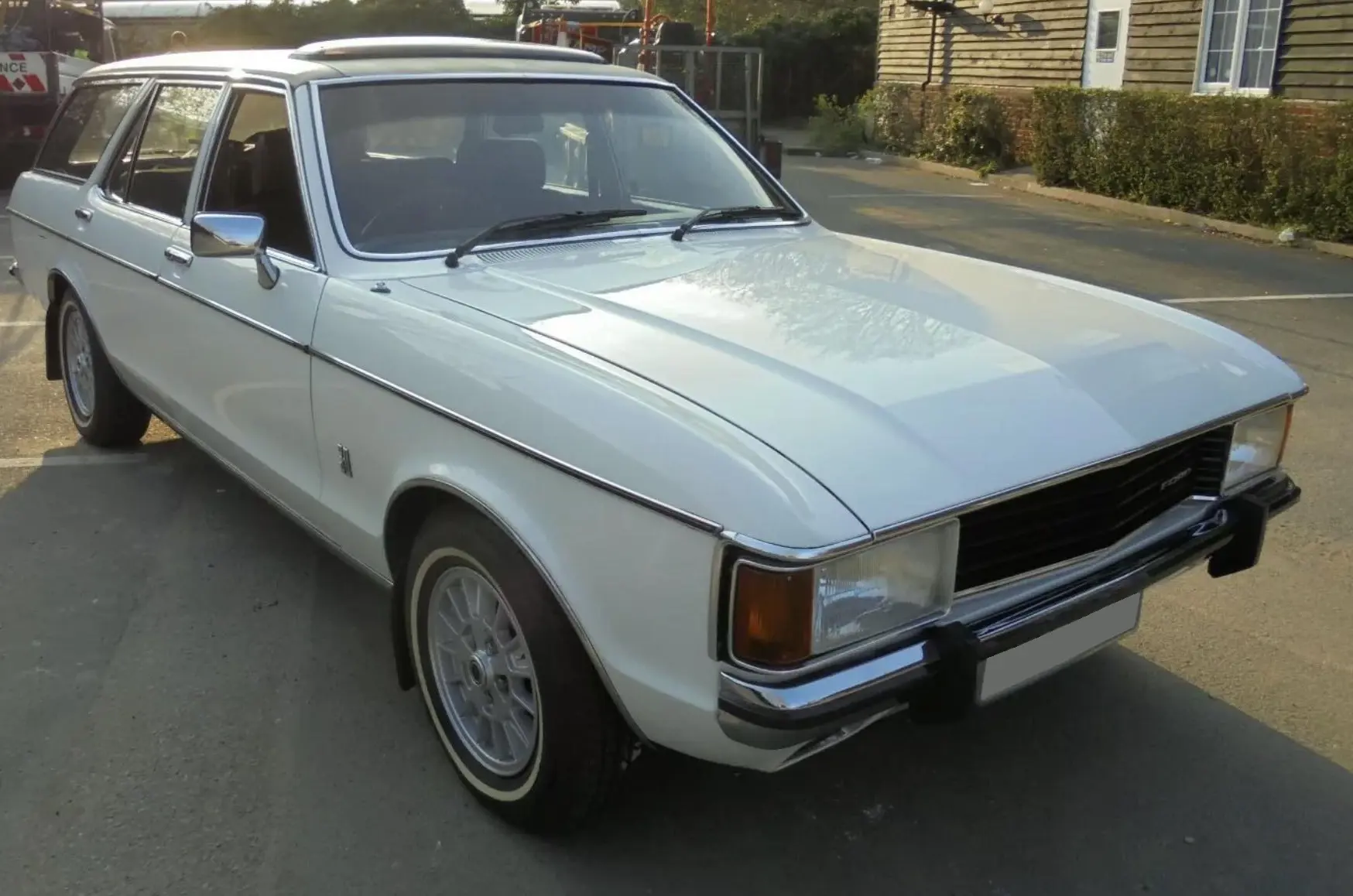MEET THE OWNER – TREVOR HANDY AND HIS FORD GRANADA 3.0GL MK. I ESTATE
25 October 2023
The public reaction is very good, especially when you lift the bonnet you can eat your lunch off it. I have always been a fan of big cars and estate cars, especially Ford, so when I first saw this one, I knew I would end up with it.
Trevor Handy is the proud owner of one of the rarest Fords on the road. Today, you are more likely to see a Granada Mk. I Estate in repeats of George and Mildred (where ‘Mr. Fourmile’ drove a green example) than in the metal. And this example looks utterly resplendent in Diamond White.

Ford introduced the Granada saloon in March 1972, with the Estate following seven months later. Buyers had a choice of the 2.5-litre Consul and the 3.0-litre Granada; they were Dagenham’s first in-house large purpose-built wagons. The Salesman’s Guide predicted their becoming “the most wanted and prestigious estate cars in Britain”.
The entire range was updated as the Series 2 in autumn 1975. Ford dispensed with the Consul badge for the cheaper models. Estates were available as the L, with a 2.0-litre or 2.5-litre engine, or the 3-litre GL. As the brochure promised:
The Granada Estates come fully equipped with 77 cu. ft. load capacity, head restraints, driver’s door mirror, fabric trim, hazard warning flashers, halogen headlights, loop pile carpet, reclining front seats, tailgate wash/wipe and so much more! That’s Ford Value For Money!
In addition, the GL (“for when you want to travel first class) boasted front fog lamps, a MW/LW radio, a remote-control door mirror, and a tachometer.
In terms of rivals, a GL Automatic Estate such as Trevor’s would have cost £5,150 in late 1976, making it almost the same price as the Triumph 2500S at £5,151. The British Leyland station wagon was even better equipped than the Ford but smaller and not quite as practical. A Granada buyer might have also looked at the underrated Vauxhall VX 2300 Estate for a mere £3,275, but it had only four cylinders, and the sleek bodywork made it more of a five-door fastback.
As for overseas competitors, you would probably instantly dismiss the Datsun 260C and the Toyota Crown Custom Estates – they may be luxurious but were also somewhat chintzy. As for the Citroën CX 2400 Safari, it was technically fascinating but formidably complex, even if it did cost only £4, 638.
By contrast, the Peugeot 504 GL Estate was reassuringly straightforward and good value at £4,144 but more utilitarian than the Granada. That left the Volvo 245 DL at £5,027 with automatic transmission as a viable alternative. Yet, fine car though it was, the Volvo seemed to lack the Ford’s dynamic appeal.
Sales of the Mk. I ended in 1977 with the introduction of the Mk. II. Today, Trevor finds that “She is very responsive and positive on the road - the Granada pulls like a train and is very comfortable”. Or, to quote Car of September 1976, the Granada was “a hell of a lot of estate for the money”.
Not to mention the appeal of a Ford with “sports road wheels”.
With Thanks To: Trevor Handy
